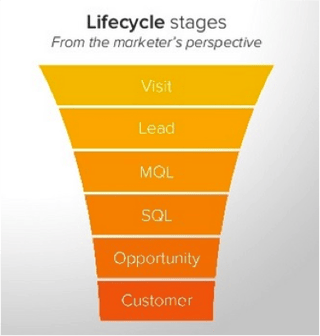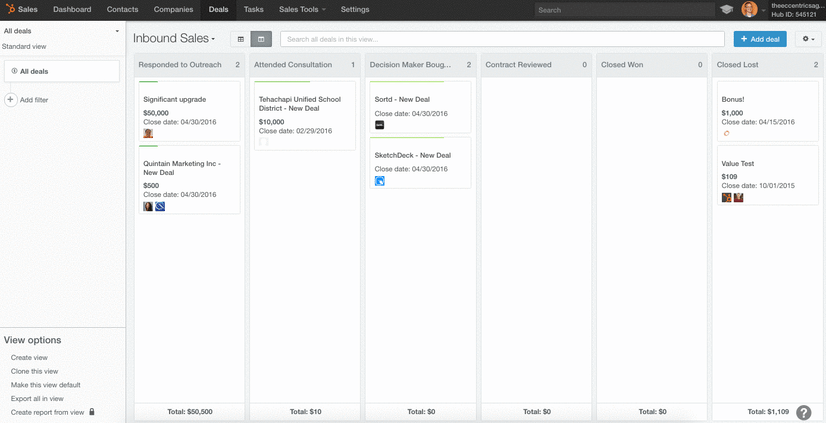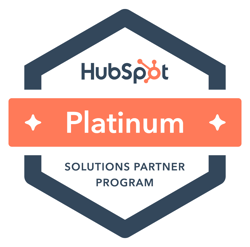
4 Essential Tips to Align Sales & Marketing For Your Foodservice Operation
By Erik MacPherson / CRM, sales process, marketing automation, hubspot, aligning sales and marketing / 0 Comments
Aligning sales and marketing is essential to achieve company growth goals, keep (sales) employees happy, and ensure maximum results. However, it can also be a very daunting task. Are the two organizations on the same page? What does that even mean? Where do you begin? Who does what? What are the challenges? What are the goals?
The information below will help you map out what your foodservice company needs to consider before entering into that conference room for your first workshop.
Let's start off on the marketing side of the house. What is marketing's ultimate job? We believe that marketing should be feeding sales-ready leads to reps, while continuing to build the brand(s). Agree? Good. Then what is a 'sales ready lead'?
The Marketing Funnel - Defining the Lifecycle of a Lead
Just like with sales, marketing has its own funnel. Although when you break it down to its core, it's not all that different from a sales funnel. Marketing's job is to create, nurture, and delight leads/contacts/customers. In order for sales and marketing to be aligned, both teams should agree on the basic definitions of the lifecycle of a lead. The difference is where the lead is in her Buyer's Journey.
[Learn more about how the Buyer's Journey matches the Marketing Funnel through the Pretzel Effect.]
Together, sales and marketing should determine when a lead is qualified. When a qualified lead is ready to talk to sales, it is marketing's job to get it into sales' hands ASAP for direct follow up. However, not everyone that engages with us online today is 'ready to buy'. Your organization may want to take this example into consideration (and apply it):
- Subscriber - signs up for email newsletter or blog from your website
- Lead - continues to engage with your company online by visiting content on the website, may download an offer
- MQL - what defines this contact/company as an ‘ideal customer’ for your company? [Marketing Qualified Lead]
- SQL - what defines this contact/company as a sales-ready lead for your company? [Sales Qualified Lead]
- At this crucial stage, consider:
- What happens here? What is the process of getting this lead intel into the right person’s hands?
- Sales should be touching the lead within an hour
- At this crucial stage, consider:
- Opportunity - Sales turns the SQL into an opportunity, but how? Where? What system does your company use to track this? [i.e. CRM]
- Customer - When is a contact/company labeled as a customer?
Consider this: What is the Life-Time Value of a customer? Do they purchase over and over again? If so, what’s the process for repeat customers continuously buying, and how is that tracked?
Marketing should rely on feedback from sales, and together, define (and agree to) the Lifecycle of a Lead.
Sales Pipeline - Defining the Sales Stages
Once a sales qualified lead is passed to a sales rep, the rep (and management) will track it to closure. Capturing the deal stages of each opportunity allows for sales reps (and management) to know where they stand monthly, but also helps the company forecast revenue one, six, or even 12 months out depending upon the sales cycle.
Each foodservice company has its own sales pipeline, stages, and process.
Here's an example:
- Initial Sales Presentation [20%]
- Appointment Scheduled [35%]
- Quote [50%]
- Decision Maker Bought In [75%]
- Contract Sent [90%]
- Closed Won [100%]
- Closed Lost

Does your company have multiple products? It's quite possible you may have multiple pipelines based on product type.
Has your organization mapped out this pipeline on paper? Does everyone in your sales organization know this process? Maybe it's time to find out.
The Software - CRM
Once you have the lifecycle stages of a lead and the pipeline(s) defined, how do you track it? That's where the CRM comes into to play. Here are a few questions to ask in order to determine what type of CRM could work for you:
- What happens when a sales person (or anyone) leaves the company? Where are the account details stored? On a laptop?
- How are sales people staying organized with their tasks?
- Do you need various departments to have visibility into an account/contact/company? (i.e., Service vs. Sales)
- Do you need global data visibility for companies and/or various executives/leadership?
- Do you need visibility into each sales person’s activities and reporting?
- Do you need custom reporting per brand/product, etc.?
- Do we need to define access levels? Who needs to use it?
- Superusers vs.
- Admins vs.
- Users
BONUS Tip: Sales Enablement
If you've read this far, congrats. I want to reward you. What functionality will help sales do a better job, faster, close more business, stay organized, and be happy? Tools exist to help sales people, as well as management. Consider the following ideas to help empower sales:
- Tracking/Intel
- Track when all people open sent emails
- Track when Buyers are visiting the website, blog, etc.
- Track emails being sent to the CRM for visibility across the company, let alone to keep the sales person organized
- Email Templates
- Sending a consistent message that performs well and gets read and responded to
- Maximize the communication strengths of your sales folks
- Follow a proven process for closing business and providing post sales-support
- Timing
- Knowing when to follow up, send a particular email
- Set emails to send at ideal times in the future
- Schedule Meetings
- The easy button allows you to select the amount of time for the meeting
- Use a link embedded in your emails - clients can click on it and see your openings
- Sync it with your calendars to minimize the back and forth time wasted trying to nail down a day and time that works for everyone
- Documents
- Share common documents across your sales team for easy access and consistency
There is no better time than now to tackle the hard stuff when it comes to aligning sales and marketing. Together, TMC can help guide your organization through this transformational change. Get started now by booking your free webinar to learn more about the power of HubSpot's marketing automation tool and CRM.





